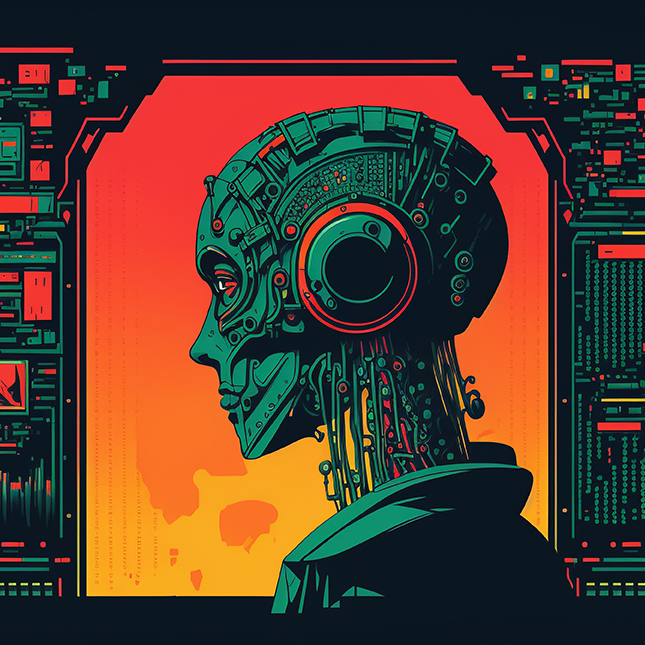Over time Artificial Intelligence (AI) has evolved from its earliest beginnings into the sophisticated systems that we use today. In this piece let us embark on an exciting journey throughout history to explore significant milestones in AI innovation.
We’ll focus on the pioneers who played critical roles in developing AI and discuss significant technological breakthroughs that have led us to where we are today.
1940- 1950s: Foundational Building Blocks for AI The Turing Test by Alan Turing (1950)
Alan Turing is celebrated as one of AI’s founding fathers due to his immense contributions in the field as an English mathematician and computer scientist. His monumental publication in 1950 – Computing Machinery and Intelligence – proposed the Turing Test to test machines’ intelligence measuring its ability to emulate human like responses. This determines whether machines can convince a human judge that they are not machines but humans.
Claude Shannon’s Information Theory (1948)
In 1948 Claude Shannon – an accomplished American mathematician and electrical engineer – laid the groundwork for information theory in his revolutionary paper, A Mathematical Theory of Communication. The potential of artificial intelligence as a field became more apparent with John von Neumann’s work on self-reproducing automata – where he explored how machines could create copies of themselves. These findings helped to lay out a blueprint for developing self-learning machines, which remain integral to modern day AI.
Dartmouth conference (1956)
There was further progress in AI through events such as the Dartmouth Conference. It facilitated crucial discussions on simulating human intelligence using machines led by some of the brightest minds at that time including John McCarthy and Marvin Minsky.
More contributions came from Allen Newell and Herbert A. Simon whose work on Logic Theorist & General Problem Solver added essential insights into early stages of developing AI research.
Herbert A. Simon’s also enabled the creation of Logic Theorist – an AI program that proved sophisticated mathematical concepts by employing tree structures in its operations.

General Problem Solver (1957)
Four years later Newell and Simon partnered again to develop General Problem Solver (GPS) which could solve diverse problems through heuristics application. Fast forwarding a couple of years Frank Rosenblatt created perceptrons – an early form of artificial neurons capable of performing basic pattern classification – paving new ways for advanced deep learning models down the line.
1960s-1970s
Another momentous invention occurred in 1964 when Joseph Weizenbaum birthed ELIZA – one of the earliest natural language processing programs designed for pattern matching response generation similar to human psychotherapists. Today this system still holds relevance as it sets a foundation for modern conversational AI systems like chatbots.
When Terry Winograd developed SHRDLU in the late 60s early 70s he laid the groundwork for advancements in artificial intelligence that would shape computing as we know it today. SHRDLU was remarkable because it allowed software to manipulate objects using natural language commands within virtual environments.
Roll on the 1980s
This was the decade that saw even more milestones as Expert Systems gained traction among AI developers who sought ways to work beyond mere command execution. Now they could process information based on vast amounts of expertise augmented with smart algorithms to make informed decisions about specific domains. MYCINs – an application in infectious disease diagnosis – and XCONs configuration services are just two examples.
2000s and beyond
Machine Learning Algorithms
Meanwhile Machine Learning Algorithms also emerged during this period allowing computers to learn from data without explicit programming – a key breakthrough towards solving complex problems with greater precision than ever before. In 2010 the ImageNet Challenge played a crucial role in advancing deep learning techniques used today. The competition set new records for computer vision accuracy by training models on massive amounts of image data.
Natural Language Processing
These breakthroughs have laid the foundation for numerous applications where deep learning has become ubiquitous today”. The early 2000s was a time of significant progress in natural language processing (NLP). Thanks to the development of algorithms capable of understanding and processing human language sentiment analysis techniques emerged.
Chat-GPT
These allowed for determining sentiment expressed within text through machine learning achieved by large datasets availability. In 2020 OpenAI released their impressive GPT 3 language model, which boasts a staggering 175 billion parameters. This cutting edge technology has the ability to generate highly coherent and contextually relevant text for a variety of applications such as chatbots, content creation, and code completion. The possibilities offered by GPT 3 are truly revolutionary.




